March of the Human Rights Jukebox: On Saturday 16th June I went to South London to photograph this event and put many pictures and a fairly long text on-line on My London Diary.
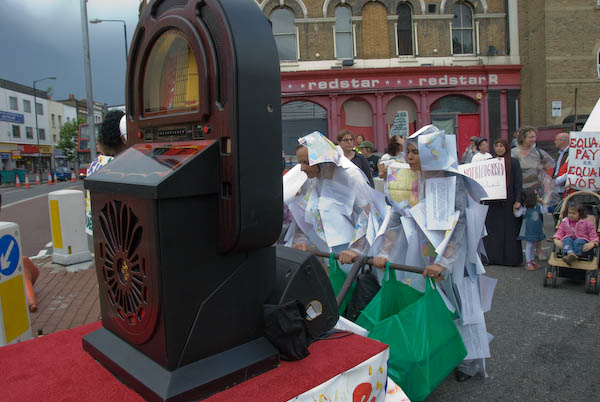
Here I’ll share the text (with some corrections and links added) and just a few of the pictures – you can see many more of these on My London Diary. You can read about the Human Rights Juke Box on the South London Gallery site, and on Isa Suarez’s web site.
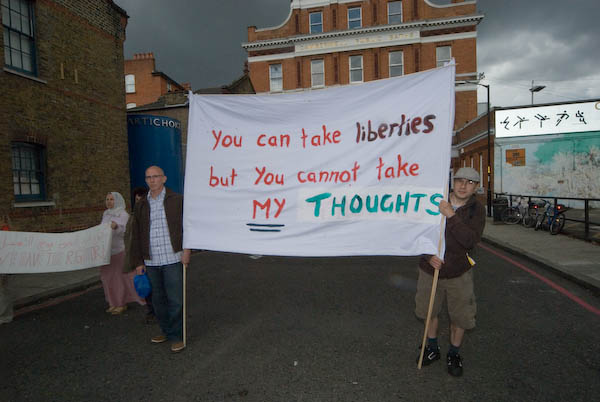
So this is what I wrote in 2007:
I joined the ‘Human Rights Jukebox’ in its progress from the Camberwell Magistrates Court to Peckham on Saturday 16th June. An event in the Camberwell Arts Week, the ‘March Of The Human Rights Jukebox’ was organised by Isa Suarez, who had a one-year artists residency in Southwark in 2006.
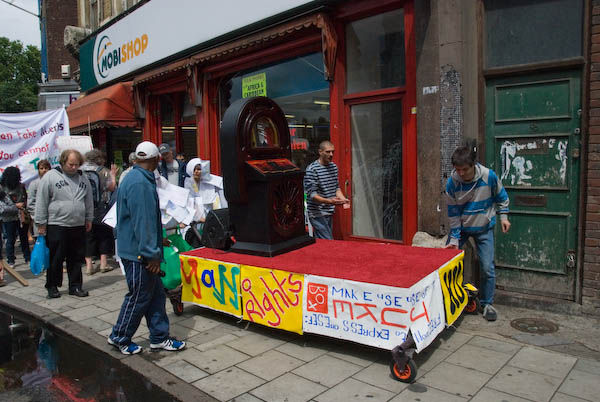
The juke box included thoughts on people’s rights from many residents and diverse groups in Southwark, some of whom marched with banners along with it.
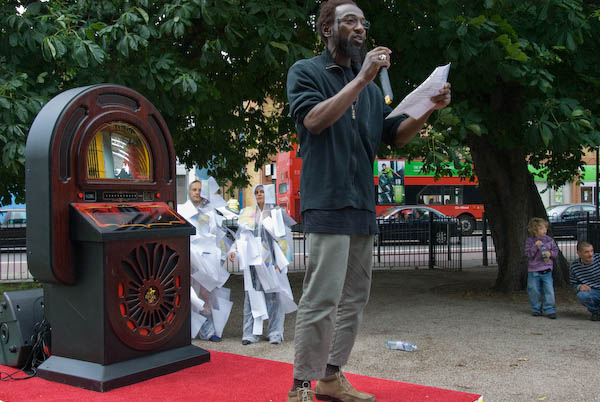
At the start of the event, the Dulwich Choral Society performed a specially composed piece by Suarez, using words from the ‘jukebox’. On Clerkenwell Green we stopped for a impassioned recital (in French) by a Black African poet, and in front of the old baths in Artichoke Place (now the Leisure Centre) there was a long performance by Deadbeat International as well as a short song by three musicians that left us wanting more.
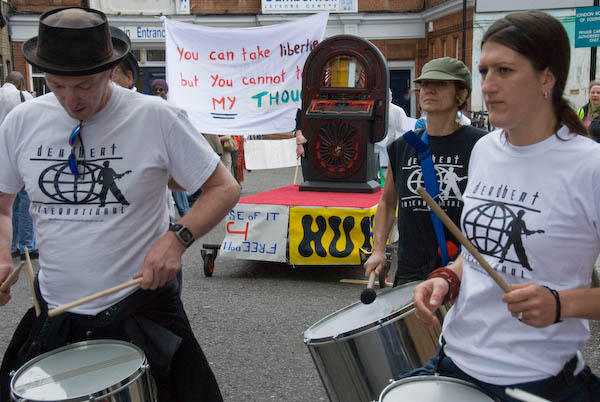
Deadbeat International also performed at various other points on route, including another energetic set at Peckham Library. The march was led into Peckham by a rapper, with some forthright views on human rights.
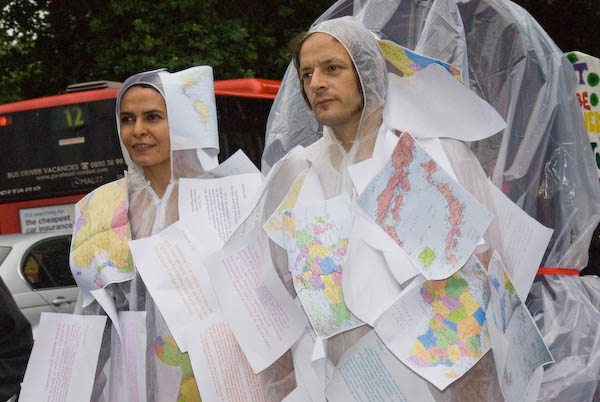
Accompanying the jukebox were the live art group ‘mmmmm‘, Adrian Fisher & Luna Montengro, covered from head to foot in sheets of paper containing the complete text of the UN Universal Declaration Of Human Rights, in both English and Spanish as well as the pages of a world atlas.
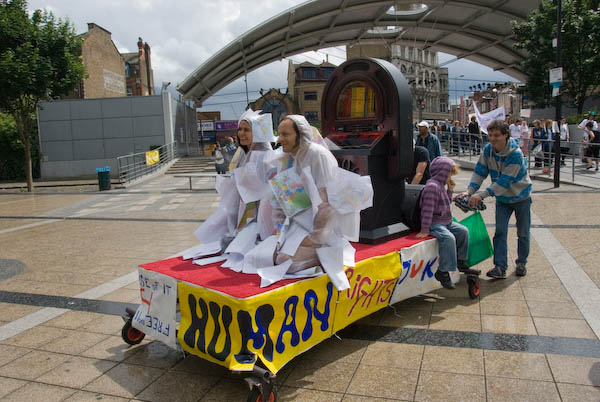
In front of the library at Peckham, mmmmm completed the event by unpinning the sheets from each other one by one, reading the clauses and feeding the sheets into a shredder (and when this gave up, tearing them up.)
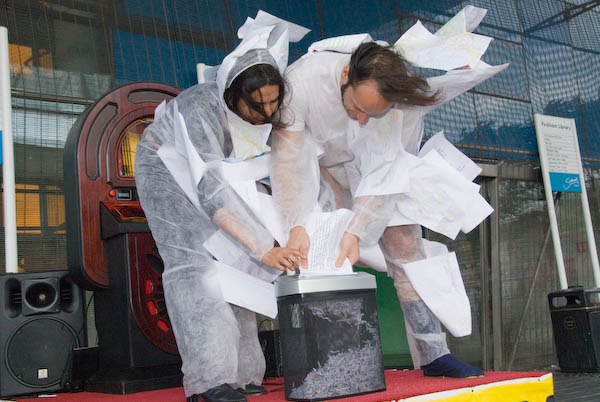
Each then poured cold water over the other and threw the shredded papers, so that they stuck to the wet clothes and skin. Finally we were all invited (in what we were informed was an Argentine custom) to jump once into the air for each of the 30 clauses of the declaration.
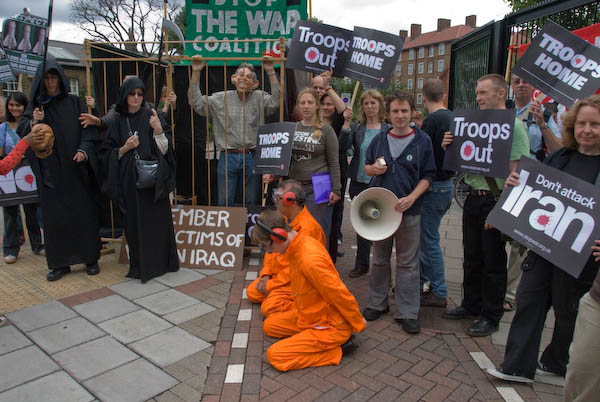
On the way to the event, I’d jumped off the bus at the Oval, where ‘Stop The War’ and other demonstrators were protesting. Gordon Brown was apparently expected to arrive at 12.00 to watch some kind of game there. It was a very different kind of action to the ‘jukebox’ though both were political and art in their different ways, although only one gets Arts Council funding.
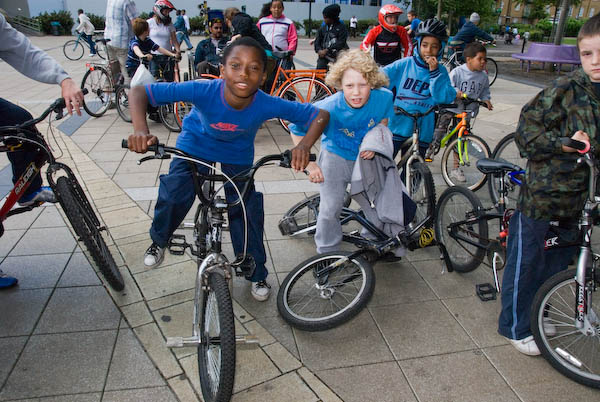
Also dropping in at Peckham Library were a group of young cyclists from the go-kart track in nearby Burgess Park. They were a lively crew and everyone seemed to want to be photographed.
More pictures:
Stop The War Demo
March of the Human Rights Jukebox
Flickr – Facebook – My London Diary – Hull Photos – Lea Valley – Paris
London’s Industrial Heritage – London Photos
All photographs on this page are copyright © Peter Marshall.
Contact me to buy prints or licence to reproduce.






